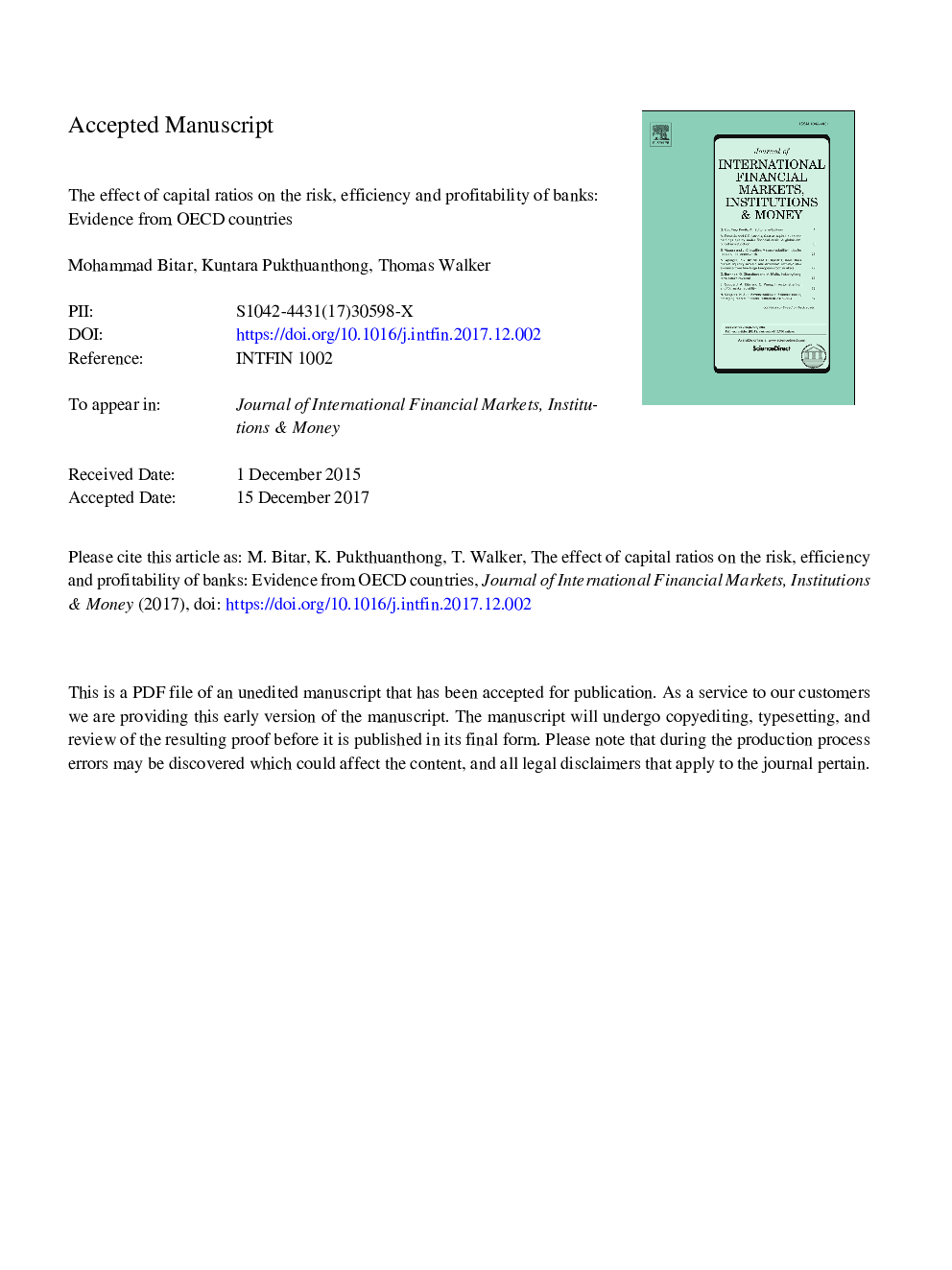| Article ID | Journal | Published Year | Pages | File Type |
|---|---|---|---|---|
| 7364292 | Journal of International Financial Markets, Institutions and Money | 2018 | 61 Pages |
Abstract
Using a sample of 1992 banks from 39 OECD countries during the 1999-2013 period, we examine whether the imposition of higher capital ratios is effective in reducing risk and improving the efficiency and profitability of banking institutions. We demonstrate that while risk- and non-risk based capital ratios improve bank efficiency and profitability, risk-based capital ratios fail to decrease bank risk. Our results cast doubts on the validity of the weighting methodologies used for calculating risk-based capital ratios and on the efficacy of regulatory monitoring. The ineffectiveness of risk-based capital ratios with regard to bank risk is likely to be exacerbated by the adoption of the new Basel III capital guidelines. While Basel III requires banks to hold higher liquidity ratios along with higher capital ratios, our findings suggest that imposing higher capital ratios may have a negative effect on the efficiency and profitability of highly liquid banks. Our results hold across different subsamples, alternative risk, efficiency, and profitability measures and a battery of estimation techniques.
Keywords
Related Topics
Social Sciences and Humanities
Economics, Econometrics and Finance
Economics and Econometrics
Authors
Mohammad Bitar, Kuntara Pukthuanthong, Thomas Walker,
